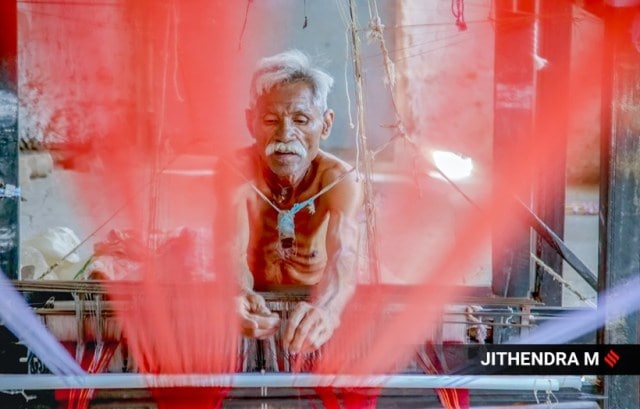
Written by Boddu Srujana and Anagha Tobi
GST 2.0 has been lauded for its promise of simplification, fewer tax slabs, and lower rates on essential goods. It is presented as a reformist agenda to boost domestic demand and increase self-reliance. Yet, tax reform is never merely an economic matter; it is also deeply political, reshaping the relationships between the state, markets, and citizens. From its inception, GST has carried the dual ambition to unify the market and formalise the economy. However, the more pressing question is whether GST 2.0 will reshape the world of work, particularly the lived realities of India’s informal workers, who constitute the overwhelming majority of the workforce.
Economic policies carry political implications, and the architecture of GST privileges those who can comply, like large firms and well-capitalised MSMEs, while marginalising those operating outside formal circuits. What is hailed as “efficiency” for some becomes exclusion for many. Political scientist Partha Chatterjee’s distinction between civil society and political society illuminates this further. Civil society comprises middle-class, taxpaying citizens recognised as legitimate actors in the state’s vision. Political society includes marginalised groups and informal workers whose claims are negotiated through patronage rather than formal rights. GST reforms are rooted in the idiom of civil society, for the literate, incorporated, and digitally equipped. The vast majority of informal workers, from marginalised communities, live in the political society whose survival depends on local political brokerage, public distribution systems, and employment schemes.
The transition also brings revenue losses caused by lower GST rates, with reduced compensation straining state budgets and public spending, disproportionately affecting states that house most MSMEs. These fiscal pressures limit states’ ability to support informal workers and enterprises that are vulnerable due to compliance costs. For informal workers, GST imposes newer compliance costs and administrative burdens that they are often ill-equipped to handle, pushing many further into precarity. Studies show that post GST implementation, there was widespread retrenchment and wage cuts among informal workers tied to MSMEs. The reform forces “premature formalisation” that many cannot sustain without adequate handholding, leading to loss of livelihoods and increased exclusion.
Uneven experiences of GST
The exclusionary dynamics of GST are visible across states, though each context reveals a different inflection. Gujarat is celebrated as a hub of entrepreneurship and manufacturing, particularly in textile and diamond clusters. Yet, GST has added compliance costs that disproportionately burden small traders and weavers, many of whom belong to Dalit and OBC communities. This accelerated casualisation in the textile sector. In a “model” state that prides itself on growth, the social costs of GST remain invisible. Punjab, once home to thriving industries, faces similar struggles. States previously used excise rebates and subsidies to protect industries, but GST centralised this power, reducing fiscal autonomy. Informal subcontracting increased, pushing workers into insecure contract roles. Ironically, a tax meant to formalise the economy seems to have accelerated informal labour.
Tamil Nadu offers another angle. Its industrial base is more diversified, and its welfare infrastructure is relatively stronger. But, MSMEs in sectors such as leather and engineering report that GST compliance incurs disproportionate overheads, limiting state revenue and hence, welfare funding. Kerala attempts to strike a balance between fiscal discipline and welfare, but revenue shortfalls resulting from the GST’s centralised design constrain labour protections, despite higher welfare provisioning. Taken together, these states illustrate the uneven geographies of GST’s burden. Rather than harmonising India’s economy, the reform has intensified caste-based differences, regional vulnerabilities, eroded fiscal autonomy, and increased the precarity of informal workers. In effect, GST transforms what might appear as a neutral market reform into a governance mechanism that silently reproduces vulnerabilities across India’s economy.
Governance, Informality, and Exclusion
From a governance perspective, GST is not merely a fiscal tool but a mechanism of selective incorporation, integrating those who can comply into a formal, rule-bound regime while leaving others in the ambiguous realm of political society. This reflects the state’s “governmental” logic in the Global South, governing populations differentially based on their perceived utility and visibility. GST thus functions not only as a revenue-generating mechanism but also shapes the economic citizen as a fiscally disciplined and tax-compliant individual. For informal workers, this translates into a double exclusion. Their enterprises are often too small or marginalised to benefit from GST compliance advantages, while state revenues increasingly depend on consumption taxes like GST, which are regressive by nature. This contradiction is deeply entwined with social hierarchies; Dalits and OBCs, concentrated in low-capital, labour-intensive sectors, disproportionately bear the brunt of closures and job losses following GST reform. Meanwhile, upper-caste groups engaged in professional or formalised sectors navigate compliance more easily.
Moreover, reduced compensation and fiscal pressures on MSME-heavy states further strain informal workers, as governments cut back spending on welfare programmes essential for this demographic. The digital and administrative demands of GST compliance compound exclusion by disadvantaging those without digital literacy or technology access. In this way, GST’s architecture, proclaimed as neutral and efficient, reproduces and deepens extant social and economic inequalities under a veneer of modernisation.
Towards a more inclusive fiscal imagination
If GST consolidates economic power along existing caste and class lines, reforms must go beyond technical fixes to address equity. Tax systems should not reinforce social hierarchies but expand rights, protections and dignified work for marginalised workers. Fiscal reforms must be paired with worker protections and adequate fiscal support, ensuring welfare schemes remain strong. Simplified compliance, exemptions for labour-absorbing sectors, and fiscal transfers are vital to redistribute burdens and bridge the divide between India’s incorporated few and informal many. While GST 2.0 promises a unified market and formal economy in theory, in practice, it risks deepening inequalities, burdening informal workers, and marginalising vast sections of civil society. Genuine reform requires inclusive policies, fiscal federalism equity, and social protections; otherwise, efficiency rhetoric becomes exclusion veiled as progress.
Srujana teaches Economics at SRM University, Andhra Pradesh. Tobi teaches Economics at Mahindra University, Hyderabad